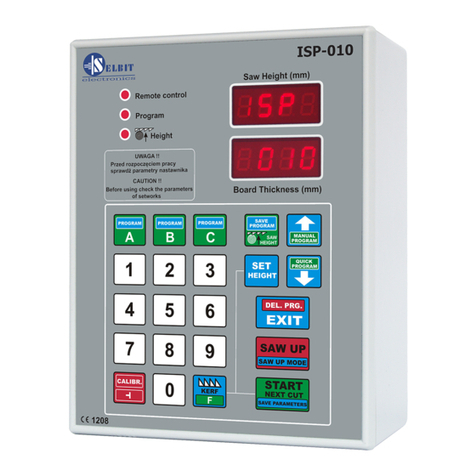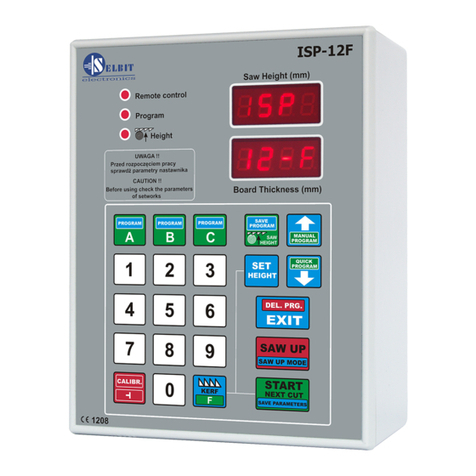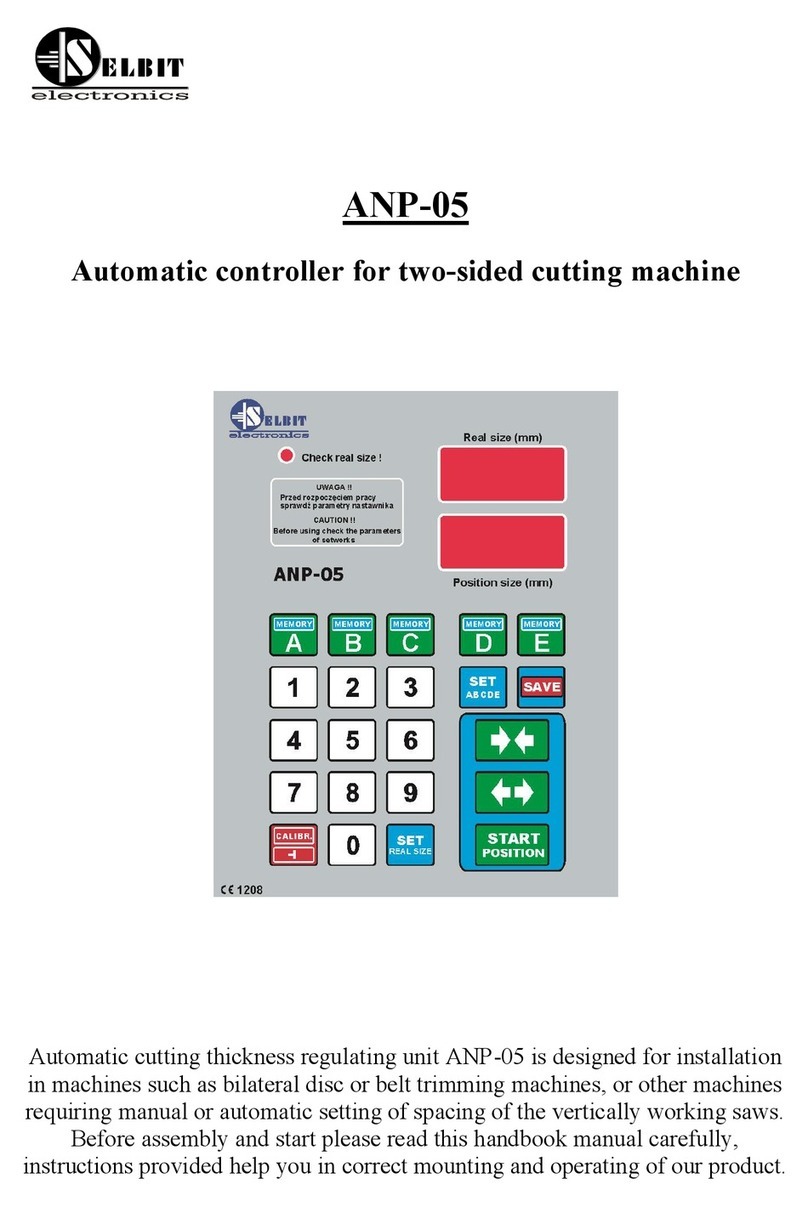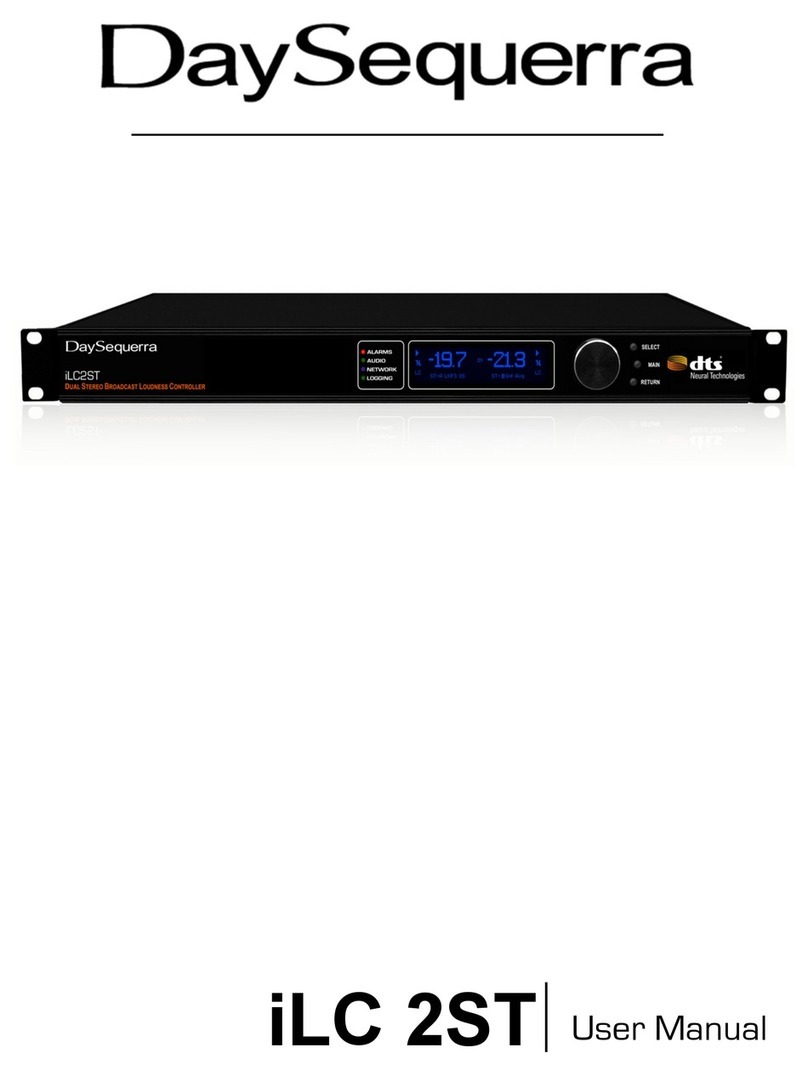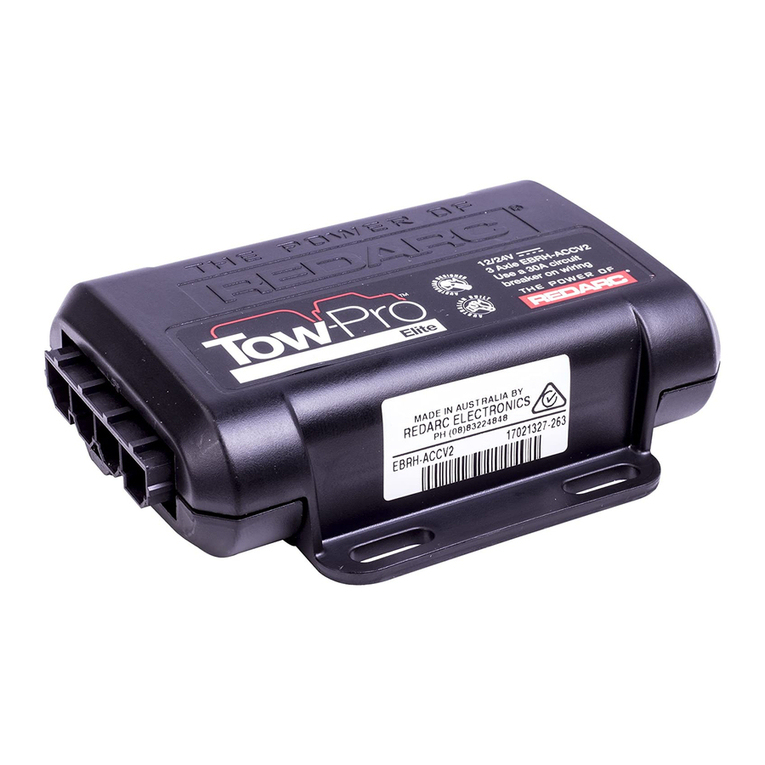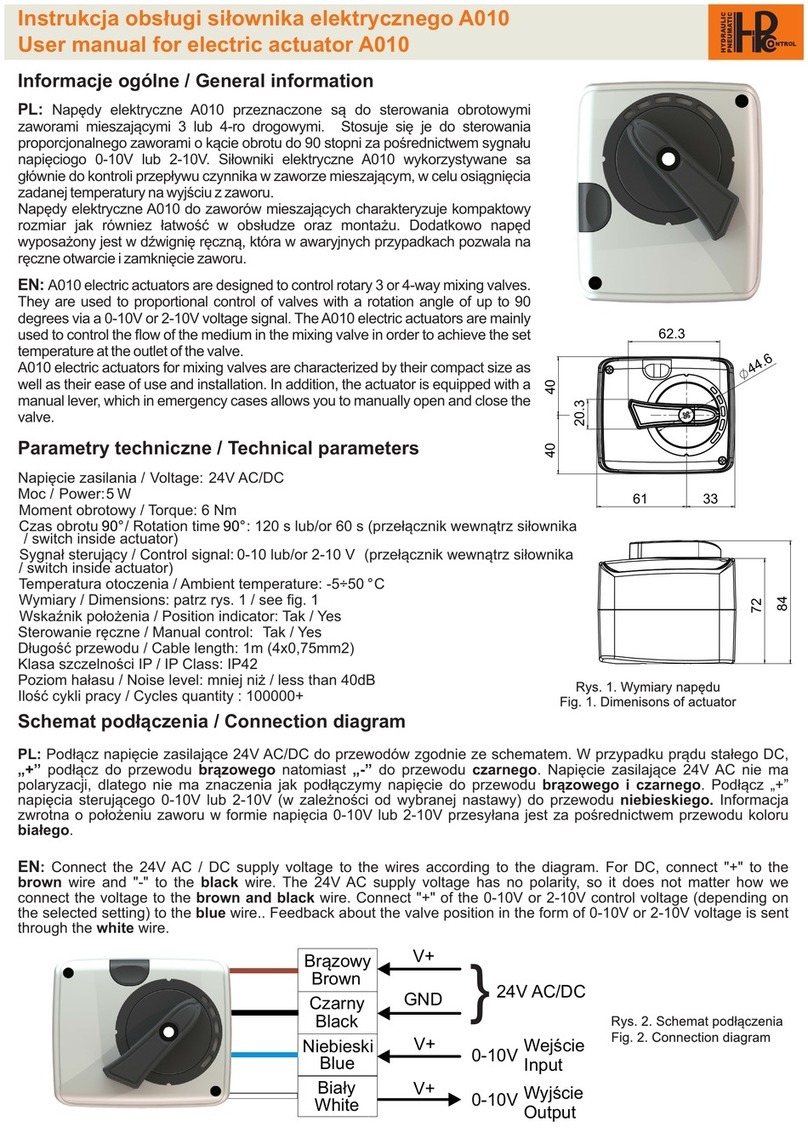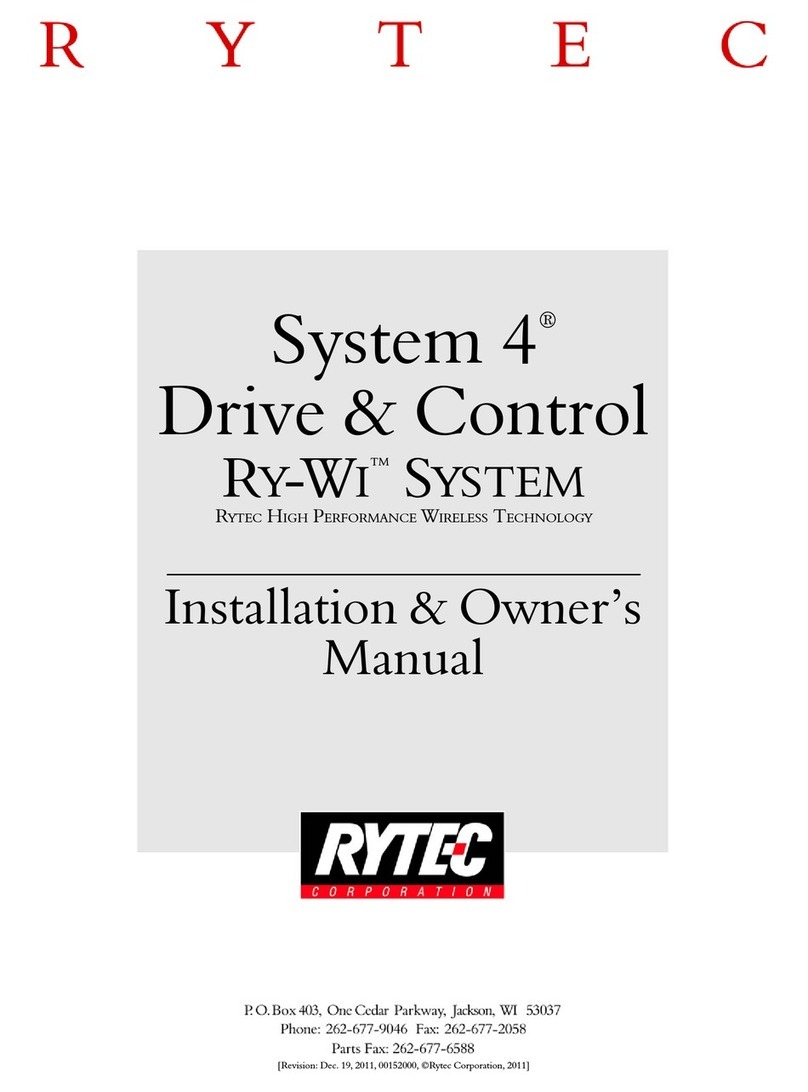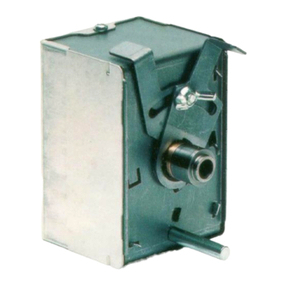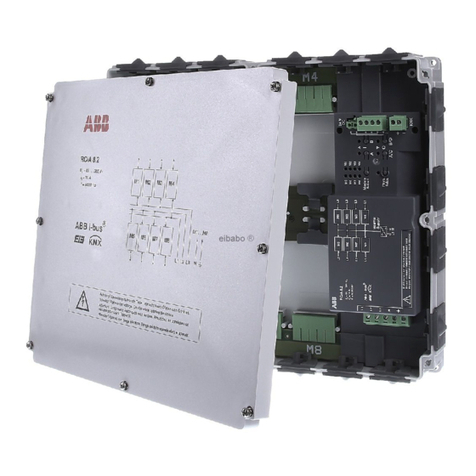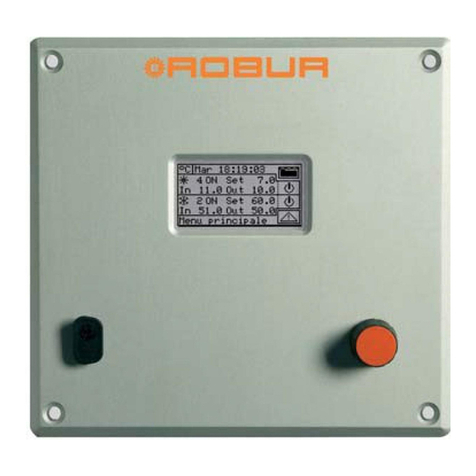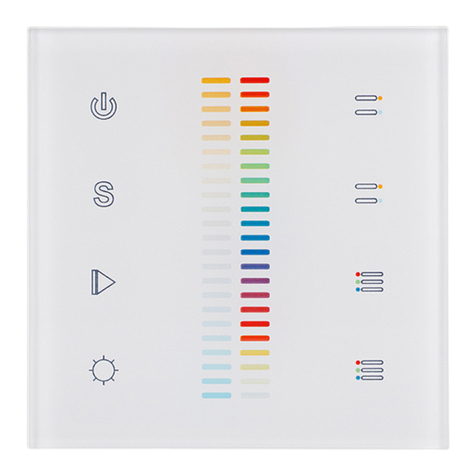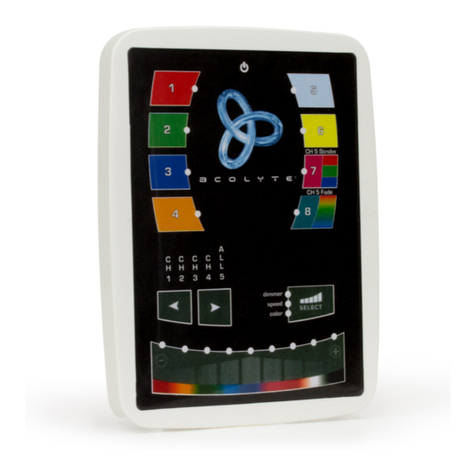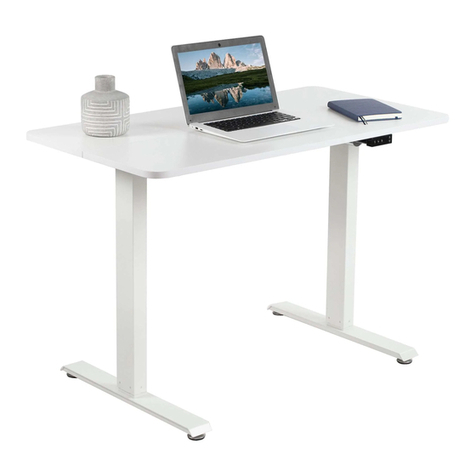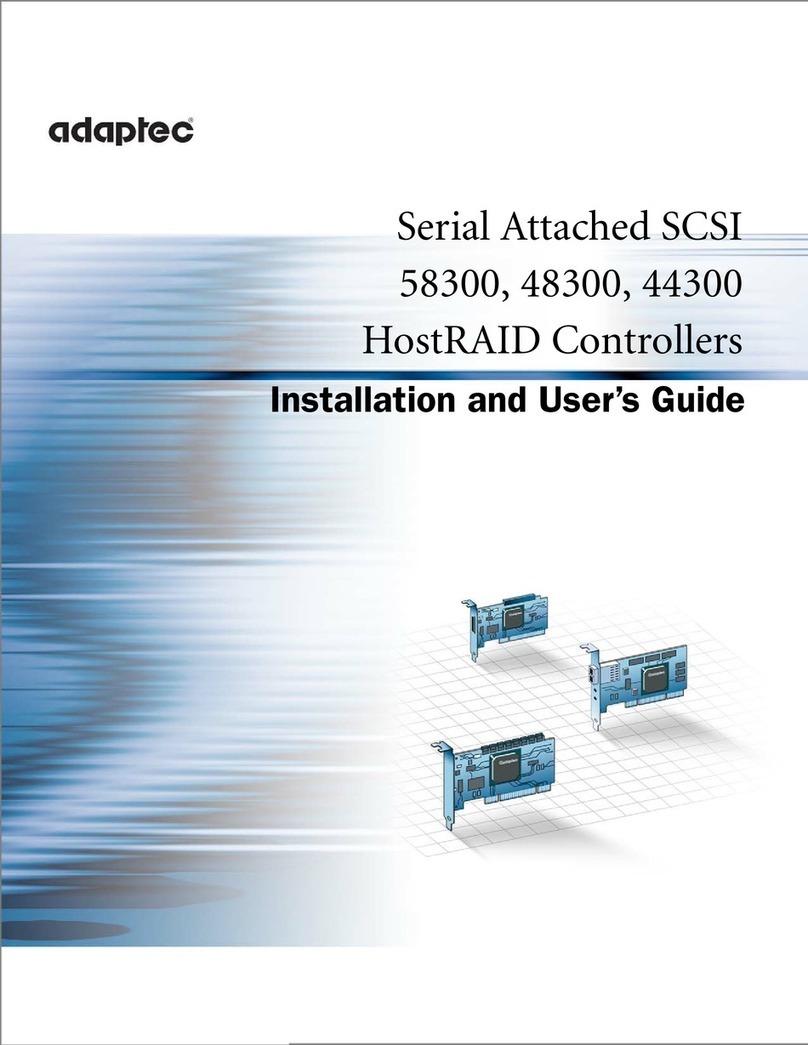Selbit ANTD-03 User manual

AUTOMATIC CUT THICKNESS CONTROLLER
FOR 2-
HEAD BANDSAWING MACHINE
INSTALLAOR AND USER MANUAL
ANTD-03
AUTOMATIC CUT THICKNESS CONTROLLER
HEAD BANDSAWING MACHINE
INSTALLAOR AND USER MANUAL
AUTOMATIC CUT THICKNESS CONTROLLER
HEAD BANDSAWING MACHINE

www.selbit.pl 2
(1) Controller Installation and Connection
In installation of the controller, one must follow the instructions stated in this manual.
Before installation in the control panel (fig. 1), it is necessary to cut a rectangular hole with
dimensions 175 x 140 mm. The hole should be madeaccurately, so that the rubber seal of the
control panel will fit tightly on the whole length. Possible irregularities left after the cutting
ought to be flatten with a small file and protected from corrosion with a high-quality paint or
lacquer.
If there is not enough free space on the control panel to install the controller, it can be
installed in any location as an additional, stand-alone device (fig. 2).
Fig. 1 – installation of the controller in the control panel of the machine
A – front panel with electronics board
B – rubber seal
C – installation frame
D – frame and panel fixing screws
(8 units, 4.1 x 12 mm)
E – Machine control panel with a cut out
175 x 140 mm hole
Fig. 2 – installation of the controller as a stand-alone device
A – front panel with electronic board
B – rubber seal
C – nut for the PG chokes
D – screw fixing back of the case
(6 units, 4.1 x 10 mm)
E – Installation element (because of the different
type of machines, the set does not contain this
element)
F – PG chokes for introduction of the cables
G – Screws fixing the case to a support or the machine
(4 units, 4.1 x 10 mm)
H – hole plugs for the holes of fixing
screws
I – back of the case

www.selbit.pl 3
When the controller is installed as a stand-alone device, one can after the installation screw it
directly on the machine with 4 units of 4.1 x 10 screws included in the set, or, if necessary,
make an additional installation element, which after screwing it on to the case will serve as a
distance support.
(2) Electrical installation
CAUTION!
Because of the risk of electric shock, all connections shall be performed only
when the machine is disconnected from power. The best way to do that is to
turn off the main switch of the machine.
All connections should be done with double-insulated cables, intended for controlling
devices powered from 230V AC network. The cables which enter the case ought to be
round, with the diameter adjusted to the chokes installed in the back of the case.
Endings of the cables should cleaned and have sleeves, or be tinned before screwing.
This is important for correct and fail-safe operating of the controller in the future.
In order to assure correct and fail-safe operation, the wiring ought to be performed in
accordance with the following instructions. Incorrect wiring can result in disturbing the
work of the controller, and thus impeding its operation.
The machine, in which the controller is installed, should have operational limit
switches, and feed contractors ought to have a blockade preventing both of
them to be turned on at once!
(3) Installation of the TSS-8/24 power transformer
TheTSS-8/24 230/24V power transformerincluded in the set ought to be installed in the
power supply cabinet of the machine.
The transformer is intended for a standard TSS-35 fixing rail, commonly used in electric
machines. The location of the transformer ought to be maximally away from other electric
elements (electrical converters, contractors, other transformers). It is important, because
otherwise electromagnetic noise may penetrate the electronic system of the controller through
the transformer.
The cables providing 230V power should be connected to the transformer clamps marked as
PRI 230V. The transformer should be installed in the circuit which includes neither
contractor inductors nor an inverter.
230V power cables ought to be laid as far from other cables in the cabinet as possible.
The cables transmitting power to the electronic board should be connected to the transformer
clamps marked as SEC 24V. Similarly as in the previous connection, these cables ought to be
laid as far from other cablesas possible, including the 230V cables powering the transformer.
Length of the power cables (24V) should be adequate to the location of the controller.
The cables going from the SEC 24V transformer clamps should in the final stage of the
installation be connected to controller board clamps marked as PWR.
(4) Installation of the interference suppressors (CPZ)

www.selbit.pl 4
Interference suppressors CPZ (RC 100nF 100 Ohm 440VAC) included in the set prevent
excessive emission of the electromagnetic noise, which is generated when the contractors
installed in the machine are operating. Their proper installation is crucial for correct work of
the controller.
CPZ suppressors ought to be connected parallel to the inductors of the contractors which
control the move of each of the two heads of the machine (H1, H2), according to the
following picture:
CPZ 1-4 – WX1P 224M 440V suppressors
S1, S2, S3, S4 – inductors controlling the movement of heads H1 and H2
(5) Installation of the encoders in the machine heads
Installation of the linear magnetic encoder MSK-320 and magnetic tape MB-3200.
The magnetic measuring tape consists of two elements, each of which has a layer of self-
adhesive tape.
The first part, thicker one, is to be stuck on a smooth, flat, and straight surface (after it has
been carefully cleaned and degreased with acetone or alcohol).
During the sticking, one should remove only part of the foil protecting the glue, then stick the
first part, starting from the top. Then, gradually, one should remove further pieces of the foil,
while sticking the freed piece of the tape to the surface.
A rubber roller might be used for pressing after the sticking, to provide a better pressure. The
tape should be stuck carefully, to avoid any bulges and stick the tape exactly straight. After
sticking the first part, protecting steel tape ought to be stuck on the top of the tape, with the
same precautions as in the case of the first sticking. Both tapes should be stuck exactly one on
top of another. MSK 320 sensor with a cable should be installed on a non-moving part of the
machine (with respect to the controller), so there will be no movements of the cable which
may lead to its damage. When the sensor is installed in the moving position, its cable must
be protected with moving rails preventing bending of the cable.
The sensor ought to be fixed with two screws going through the case in such a way that it will
be exactly 1 to 1.5 mm above the tape, in aparallel position.

www.selbit.pl
In laying the sensor cable, it is important to pu
cables and electric devices. The tape, above which the sensor is moving, cannot be
located close to any source of magnetic field (magnets, electromagnets) before, during
and after installation. Otherwise, it may be da
The surface of the tape ought to be regularly cleaned from dust and dirt with a soft brush. It is
prohibited to hit the tape or the sensor. The sensor should be installed in a position in which
the sticker SCALE SIDE
in pointing towards the magnetic
Both the sensor and tape
should be installed in such a way that in performing the whole
movement, the sensor constantly remains in the range of the tape located below.
Special attention should be put to stability of the sensor and tape installation,
vibrations of these elements while they are at work.
The manner of the magnetic sensor and tape installation
Distance of the sensor
and magnetic tape
Maximal allowed tilt of the sensor and the
vertical axis
Maximal allowed tilt of the sensor and the
horizontal axis
5
In laying the sensor cable, it is important to pu
t the cable as far away from the other
cables and electric devices. The tape, above which the sensor is moving, cannot be
located close to any source of magnetic field (magnets, electromagnets) before, during
and after installation. Otherwise, it may be da
maged!
The surface of the tape ought to be regularly cleaned from dust and dirt with a soft brush. It is
prohibited to hit the tape or the sensor. The sensor should be installed in a position in which
in pointing towards the magnetic
tape.
should be installed in such a way that in performing the whole
movement, the sensor constantly remains in the range of the tape located below.
Special attention should be put to stability of the sensor and tape installation,
vibrations of these elements while they are at work.
The manner of the magnetic sensor and tape installation
Distance of the sensor
and tape
and magnetic tape
Maximal allowed tilt of the sensor and the
Maximal allowed tilt of the sensor and the
t the cable as far away from the other
cables and electric devices. The tape, above which the sensor is moving, cannot be
located close to any source of magnetic field (magnets, electromagnets) before, during
The surface of the tape ought to be regularly cleaned from dust and dirt with a soft brush. It is
prohibited to hit the tape or the sensor. The sensor should be installed in a position in which
should be installed in such a way that in performing the whole
movement, the sensor constantly remains in the range of the tape located below.
Special attention should be put to stability of the sensor and tape installation,
to prevent
The manner of the magnetic sensor and tape installation
Distance of the sensor
and tape

www.selbit.pl 6
Magnetic sensor of heads H1 and H2 movements should be connected as presented in the
figure below.
When the controller is turned on for the first time, it might be necessary to invert the direction
of counting in one or both sensors. It is done in accordance with the description of the first
launch, by switching places of orange and red sensors.
Connecting of the sensors MSK – 320 to ANTD-03 connectors
(5a) Rotating encoder installation
If rotating encoder is being installed (for the machines with a saw moving with a
trapezoidal screw), it should be done as follows:
Rotating encoder transforms rotating movement of the screw which moves the head into
electric impulses contrived to the controller. The number of impulses per rotation of the screw
depends on its pitch. This dependency is presented in Table 1.
The trapezoidal screw moving the machine head should have free one end, so it will be
possible to drill a hole to screw in the clutch of the encoder.
In most bandsawing machines available on the market, this free end of the screw is located on
the top.
The hole should be drilled exactly centrically. Otherwise, the installed encoder may sway,
what can result in its damage. After drilling the hole of ca. 15 mm depth, it should be tapped
with M8 tap. Now, the encoder can be fixed with a fixing band included in the set (fig. 4).
The band should be fixed on the machine with a support which, given the differences in
mechanical constructions available on the market, must be supplied by the client. Fig. 4a
presents as typic look of the encoder installed on the top end of a trapezoidal screw.

www.selbit.pl 7
Fig. 4 Fig. 4a
Table 1
Screw Pitch (mm/r) Encoder type Divider
3 Rotating 42 imp / min 28
4 Rotating 42 imp / min 21
5 Rotating 50 imp / min 20
6 Rotating 48 imp / min 16
7 Rotating 42 imp / min 12
8 Rotating 48 imp / min 12
9 Linear MSK 320 + MB 320 5
10 Rotating 50 imp / min 10
Chain Bandsawing Machine Linear MSK 320 + MB 320 5
The data presented in the table should be used to check the controller parameters
Connection of the rotating encoder cables to ANT-2G connections
During the first launch of the controller, it might be necessary to change the direction of
counting for one or both encoders. It is done in accordance with the description of the first
launch by switching places of the white and black encoder.
The rotating encoder cables should be lied away from other electric cables. Through fixing it
with fixing bands it is introduced to the location where the controlled will be installed.

www.selbit.pl 8
Caution! The encoder cable must be screwed tight, to ensure in turn the proper
tightness of the connection!
Caution! Incorrect cable connection will result in a serious damage to the
encoder.
(6) Connecting the cables controlling the contractors
Buttons controlling the up- and downwards movement of the heads, which the machine
should have installed in the factory, ought to be of the clasping type, without sustaining (i.e.
they should clasp the junctions while pressed on, and unclench when the button is released).
To the buttons in the machine control panel which control the movement of the head, one
should connect a wire which consists of four pairs of cables, with double, round insulation,
with a diameter small enough to put them through the bigger choke in the back of the case of
the controller. Two pairs of cables should be connected parallel to the clamps of the upward
and downward movement of head 1 buttons, and the other two, analogously, should be
connected to the clamps of the buttons of head 2. It is important to remember to put the
sleeves or tinthe junctions. The cables should have different colours, what will facilitate their
further correct connection to the right clamps on the controller board. The cables ought to be
laid away for other electric cables and lead to a place where the controller panel will be
located.
The machine in which the controller is installed should have operational limit switches
and feed contractors of up- and downward movement ought to be prevented from both
being turned on at once!
The cables connecting the contractors ought to be connected according to the following
picture:
The manner of connecting the contractors control
After all connections have been made, you can proceed to assemble the controller casing.
Before putting the front panel into the back part of the casing or the workbench, check
whether the rubber gasket is placed in the grove running around the panel where it is
supposed to be. It is important for ensuring proper tightness of the connection and prevents
dirt from getting inside the casing.

www.selbit.pl 9
After the panel has been placed in the back part of the casing, screw in the six 4.1x12 screws
included in the set. Before the finally installing the controller and tightening the connection to
the machine, it is recommended to check whether it works correctly according to the next
section titled ‘First launch’. Having ensured that the controller is connected properly and
works as described, you can place the end caps securing screw holes and install the controller
in the machine.
The installation of the controller in the workbench is analogous to the above, except the front
panel screws, which are screwed in from the back with a plastic frame and through the metal
casing of the workbench.
After the screws have been fixed, gently stretch the cables running out of PG chokes to
remove excess cables from inside the casing (do not pull the cables too hard to avoid
damaging connections between them and the choke terminals), and then tighten the outer nuts
of the PG chokes that seal the cable entries.
In the case of installation as an independent device, you can now install the entire set in the
machine or the brackets using four 4.1x10 screws which are to be placed in the designated
holes in the back part of the controller casing.
First launch
The controller has a multi-level menu available by pressing the MENU/EXIT key.
After entering the menu, use the up and down arrow keys to select the next menu (the
current menu is shown against the dark background).
To enter the next menu (selected and highlighted using the dark background), use the right
arrow key. To go back to the previous menu, press the left arrow key, and to exit the entire
menu altogether at any moment, press the MENU/EXIT key.

www.selbit.pl 10
After

www.selbit.pl 11
turning the power on, check if the controller logo is shown on the display. If not, check the
TSS 8/24 transformer connection and repeat the attempt.
Input divider validation
Enter the appropriate divider value depending on the type of encoder connected to the
controller.
In the case of MSK-320 linear encoders working with MB-3200 magnetic tape, the input
divider value is 5 !.
To check or set the divider value, enter the main menu (press the MENU/EXIT key) and
select SERVICE and then DIVIDER.
It is possible to change the divider value after entering the three digit access code, the default
code being 123.
After the checking and possibly modifying the divider value, confirm the change by pressing
the ENTER/START key or exit the menu if you do not want to save changes.
The divider value is entered only once when the controller is launched, and there is no
need to interfere with this setting later on unless it is suspected that the controller has
decalibrated, e.g. after a power supply overvoltage.
Verification of saw kerf width setting in controller memory
To enter or verify the kerf width value, enter the main menu, select SETTINGS, then SAW
KERF and choose the relevant saw (horizontal saw or vertical saw).
Remember that the kerf width has impact on the accuracy of the controller, the kerf width of
the saws should be measured as precisely as possible. Kerf width is entered with the
precision of 0.1 mm!
After checking or entering the width of the saws currently in use in the gang saw, confirm the
change with the ENTER/START key or exit the menu if you do not want to save changes.
Controller connection verification
To check the motion contactor connections, carry out the direction test.
To do so, enter the main menu and then select SERVICE followed by DIRECTION TEST.
After entering the test menu, the display shows two counters both at 500.
The left hand side counter corresponds to left and right movement, the right hand side
counter corresponds to the up and down movement.
Now, use the arrow keys to test movement as follows:
Left-right movement test
After pressing the left arrow key, the head of the machine should start moving left, and after
pressing the right arrow key, the head of the machine should start moving right.
Up and down movement test
After pressing the down arrow key, the head of the machine should start moving down, and
after pressing the up arrow key, the head of the machine should start moving up.
If the machine does not respond correctly to the keys being pressed, check whether W1-
W4 control outputs of the controller have been correctly connected to the relevant
contactors.
Horizontal counting test

www.selbit.pl 12
After pressing the left arrow key, the value of the left hand side counter should decrease,
and after pressing the right arrow key, the value of the left hand side counter should grow.
Vertical counting test
After pressing the down arrow key, the value of the right hand side counter should
decrease, and after pressing the up arrow key, the value of the right hand side counter
should grow.
If the horizontal or vertical test results in an incorrect counting direction, turn off
the power and swap the red and orange cables of the MSK-320 sensor (the one
relevant to the direction where the incorrect counting observed) that are connected
to the INPUT joints on the controller panel.
The direction test is carried out only after the controller has been installed, at the first
launch, there is no need to perform it again during further operation of the machine.
If movement and counting directions are correct, exit the direction test menu and remember to
set the proper counter value corresponding to the actual elevation above the bed as described
below.
Setting the actual elevation above the bed
The controller is equipped with a counter showing the actual elevation of the saw above the
bed of the machine.
In order to make the controller work properly, take care to ensure that the elevation
displayed on the controller is equal to the actual physical elevation of the saw in the
machine.
To change (set) the displayed value, enter the main menu and then select SETTING and then
SET ELEVATION. At this point, check the actual elevation of the saw (e.g. using a
mechanical measuring tool the machine is equipped with), enter the value and confirm using
the ENTER/START key.
It is recommended to check whether the value shown on the display corresponds
to the actual value each time before starting work with the machine.
Autocalibration
Each machine has certain inertia depending on numerous factors, such as internal
temperature, internal resistance after lubricating the guide rails, etc.
To ensure the maximum precision of dimension settings, calibrate the controller
automatically as often as necessary.
It is recommended to carry out automatic calibration at least once a weak and
each time after applying lubricant to mechanical elements responsible for moving the
heads of the machine.
To perform an automatic calibration, enter the main menu, select SETTING and
AUTOCALIBRATION.
Then move the saws the middle location, and, having ensured that starting the machine will
not pose a threat to other people, start autocalibration by pressing the ENTER/START key.
During the autocalibration, the controller moves the heads of the machine, while displaying
the progress bar and the correction factor measurements for the subsequent movements.
Upon the completion of the autocalibration process, the controller displays a relevant
message.

www.selbit.pl 13
Menu language selection
The controller allows the user to select the language used for displaying the menu. To choose
the language, enter the main menu, then SERVICE, JĘZYK/LANGUAGE and select the
language version. Having changed the language, confirm your choice by pressing
ENTER/START.
Operation of the ANTD-03 controller
The ANTD-03 is equipped with an LCD graphic display that shows the functions carried out
by the controller and the settings.
Main window
ANTD-03 controller key function
To change the cut width setting, use the SIZE H-V key, select the setting to be changed (the
selected setting is displayed against a dark background), and enter the relevant dimension
using the numeric keys. The setting should be entered without undue delay between the digits
where the setting consists of several digits.
The selected setting is active until a contradicting one is chosen.
Additional symbols of
performed functions Saw elevation above
the bed
Vertical movement
setting Horizontal movement
setting
Confirm return point
for saw movement
Enter/exit menu
Change active setting (H-V) Start moving to position
Select movement
direction
Start return movement
of the saw
Load manual program
Load and set up
memory program

www.selbit.pl 14
Automatic positioning for single cut mode
To start automatic move, select the desired direction by using the relevant arrow key
followed by the ENTER/START or RETURN key depending on the direction of the move.
The controller allows the following movement sequences:
•- Movement down by a distance defined by the vertical setting
(down arrow plus START),
•- Movement right by a distance defined by the horizontal setting
(right arrow plus START),
•- Simultaneous movement down and right by a distance defined by both settings
(down arrow plus right arrow plus START).
•- Movement upby a distance defined by the vertical setting
(up arrow plus START),
•- Movement leftby a distance defined by the horizontal setting
(left arrow plus START),
•- Return movement in the horizontal plane to the previously set reference point
(left arrow plus RETURN),
•- Return movementin the horizontal plane to the previously set reference point with
the simultaneous down movement by a distance defined by the vertical setting
(left arrow plus down arrow plus RETURN),
•- Horizontal and vertical return movement to the previously set reference point
(up arrow plus left arrow plus RETURN).
The controller has a memory storing the reference point set by the users at any place within
the movement range of the horizontal head. After selecting the point that the horizontal head
should return to, press the MEMO RETURN key shortly. After confirming the key, it is
active (its symbol is shown on the display) until it is changed. The reference point is
deleted after power has been turned off and it is impossible to use without prior
confirmation.
Cutting programs
ANTD-03 offers the option to set the dimension for the worked material from the level of the
bed up.
1 - Manual program.
To use the dimension setting function, lift the head with the saw up to the starting material
cutting line, and press the MANUAL PROGRAM button shortly.
The controller enters the dimension setting mode and shows words ‘manual program’ at the
top of the display, below (description reads ‘STAYS’) is the current possible cutting
dimension (which depends on the elevation of the vertical head saw) and the number of the
current position (P-) and its dimension.

www.selbit.pl 15
You can enter the first dimension from the bed at the P-1 position and then use up arrow key
to change the position to a higher one enter other dimensions.
While entering the dimensions, the controller calculates and shows the remaining distance to
the saw elevation.
When the sum of the dimensions exceeds the elevation of the saw, the controller replaces the
word ‘STAYS’ with horizontal lines and the background of the neighbouring digits alternates
between light and dark.
At this point you can:
- press the ENTER/START key to set the saw at the elevation of the last position
- change the dimension of the last position
- lower the position number
- manually raise the saw head
When the required number of position has been set, you can confirm the cutting program.
This is done by pressing the MANUAL PROGRAM key shortly.
It is possible to confirm the program only if the ENTER/START key has already been used
and the controller has placed the saw in the proper position, which is shown by caption
‘Position ready – press manual program’ on the display.
An attempt to confirm the program without having pressed the ENTER/START key results in
a ‘Press Start’ message.
When the program has been confirmed, the controller displays the ‘Program saved’ message.
At this point, the cutting process can be started in a manner analogous to the manual mode.
In the programmed cutting mode, the vertical saw position is set according to the subsequent
positions in the programme, and the dimension of the horizontal saw movement is selected by
the operator, and it is shown at the bottom of the display as ‘horizontal’
In the programmed mode, the following movement sequences are possible:
•- Movement downby a distance defined by the current position setting
(down arrow plus START),
•- Simultaneous movement down and right by a distance defined by the currently
visible program position setting and horizontal dimension entered by the operator
(left arrow plus right arrow plus START),
•- Movement leftby a distance defined by the horizontal setting
(left arrow plus START),
•- Movement rightby a distance defined by the horizontal setting
(right arrow plus START),
After reaching position No. 1, the display shows the ‘Program completed’ message and
movement further down is not possible, it is only possible to move the head left and right.
To leave the program mode, press the MENU/EXIT key shortly.
2 - Memory program.
The ANTD-03 controller has the option to set up and save an individual cutting program that
can be loaded from the memory at any moment.

www.selbit.pl 16
To set up an individual cutting program, press and hold the MEMORY PROGRAM key for
about 3 seconds.
The controller enters the program set up mode, a ‘memory program’ caption is shown at the
top of the display, and the current position number and dimensionis shown at the bottom.
Now, enter all the necessary cutting position and dimensions as it is done in the manual
program, using the arrow keys and the numeric keypad.
After entering the last needed position, press the MEMORY PROGRAM key shortly. The
controller confirms that the program has been saved by displaying the ‘program saved’
message and automatically exits the program set up mode.
To use a saved program, just like in the case of a manual program, raise the head with the saw
to the starting line and then press the MEMORY PROGRAM button shortly.
After loading the memory program, the controller automatically displays the calculated final
possible position in related to the current position of the saw.
Other actions in the memory program are identical to those in the manual programme.
Operating recommendations
In order to maintain good cutting parameters, it is recommended to perform autocalibration at
least twice a week following the instruction in the section titled ‘Autocalibration’.
Warning! The controller should be operated only in temperatures ranging from -10 to
+45 degrees Celsius.
Before starting work, check if the saw elevation displayed on ANTD-03 conforms to the
elevation shown by the mechanical measuring tool.
Should there be a discrepancy, enter the proper elevation according to the instructions in the
section titled: ‘Setting the actual elevation above the bed’.
Do not press any keys on the controller with hard objects or too hard as this can cause
irreversible damage.
If the keypad is dirty, you can use popular cleaning agents, remembering not to press the
membrane keypad too hard. Excessive pressure on the keys may lead to damage and the
necessity to replace the entire keypad.
The controller should not be exposed to direct contact with water or other liquids.

www.selbit.pl 17
If a specific movement is impossible for reasons independent of the controller
(limit switch engaged, damaged encoder or controller connections), the
controller unit stops any movement and displays relevant messages.
Error messages and their causes
Message type
Cause of error
Reference point not saved At attempt at a return movement without
having saved a reference point.
No signal, movement stopped
Press ENTER, reset controller A head movement limit switch has been
engaged.
Interrupted MSK-320 connection.
Damaged MSK-320 sensor.
Improper input divider.
Autocalibration failed
Press ENTER, reset controller A head movement limit switch has been
engaged.
Interrupted MSK-320 connection.
Damaged MSK-320 sensor.
Improper input divider.
Warning wrong direction An attempt to perform a contradicting
movement (e.g. simultaneous movement up
and down).
Invalid entry The entered divider value or kerf width is out
of the permitted range.
Warning set head elevation Decalibrated elevation counter.
Warning vert. setting too high The vertical movement setting too high in
relation to the actual elevation of the head
over the bed.
EMC compliance
The ANTD-03 controller complies with the binding electromagnetic compatibility (EMC)
standards.
The ANTD-03 controller should be installed and set up according to the European and
national standards. Installers of the electric machine steering system are liable for the
adjustment of the device, and they have to comply with the EMC directive.
The ANTD-03 controller has to be considered as a component because it is not a machinery
or a ready-to-use appliance according to European directives (Machinery Directive and EMC
Directive). Liability for compliance with those standards lies with the end user installing an
ANTD-03 controller.
The product and fittings described in this manual may be changed and modified from time to
time both in terms of the technical aspect and the manner of use.
The description may not in any way be regarded as a contract.
Table of contents
Other Selbit Controllers manuals
Popular Controllers manuals by other brands
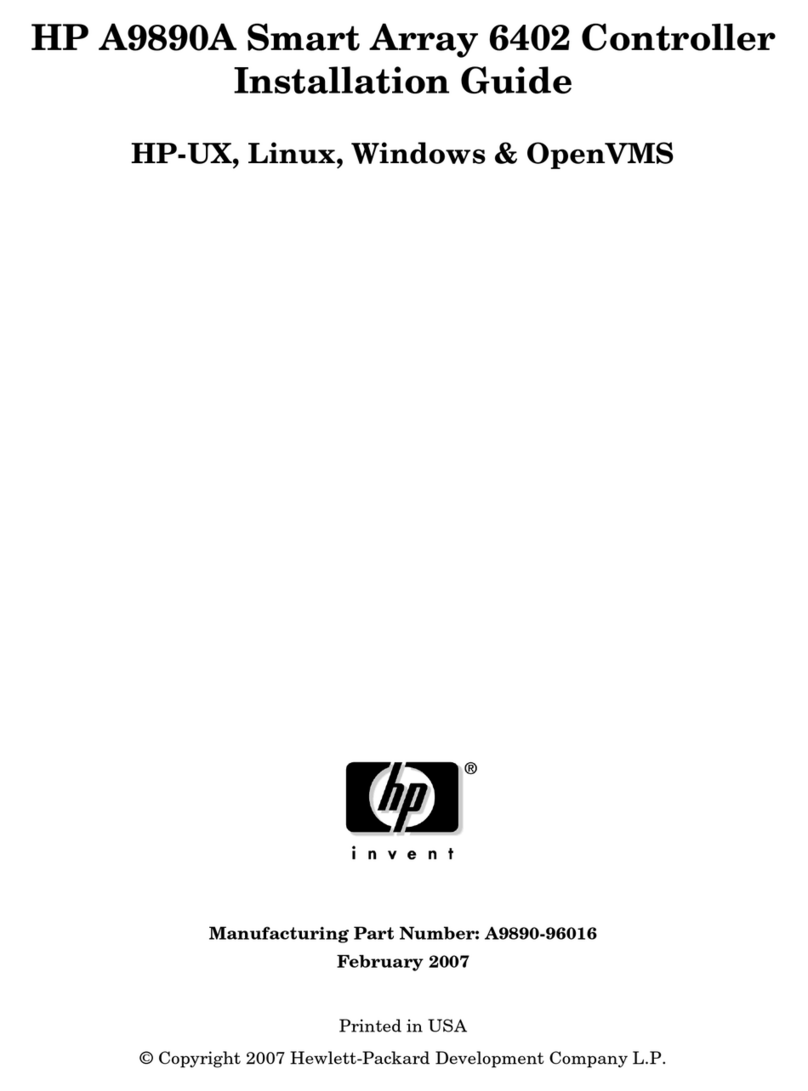
HP
HP A9890A - Smart Array 6402/128 RAID... installation guide
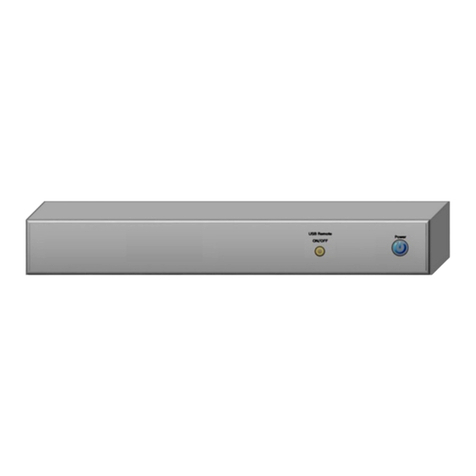
AccuDual
AccuDual ACD-52300 user guide
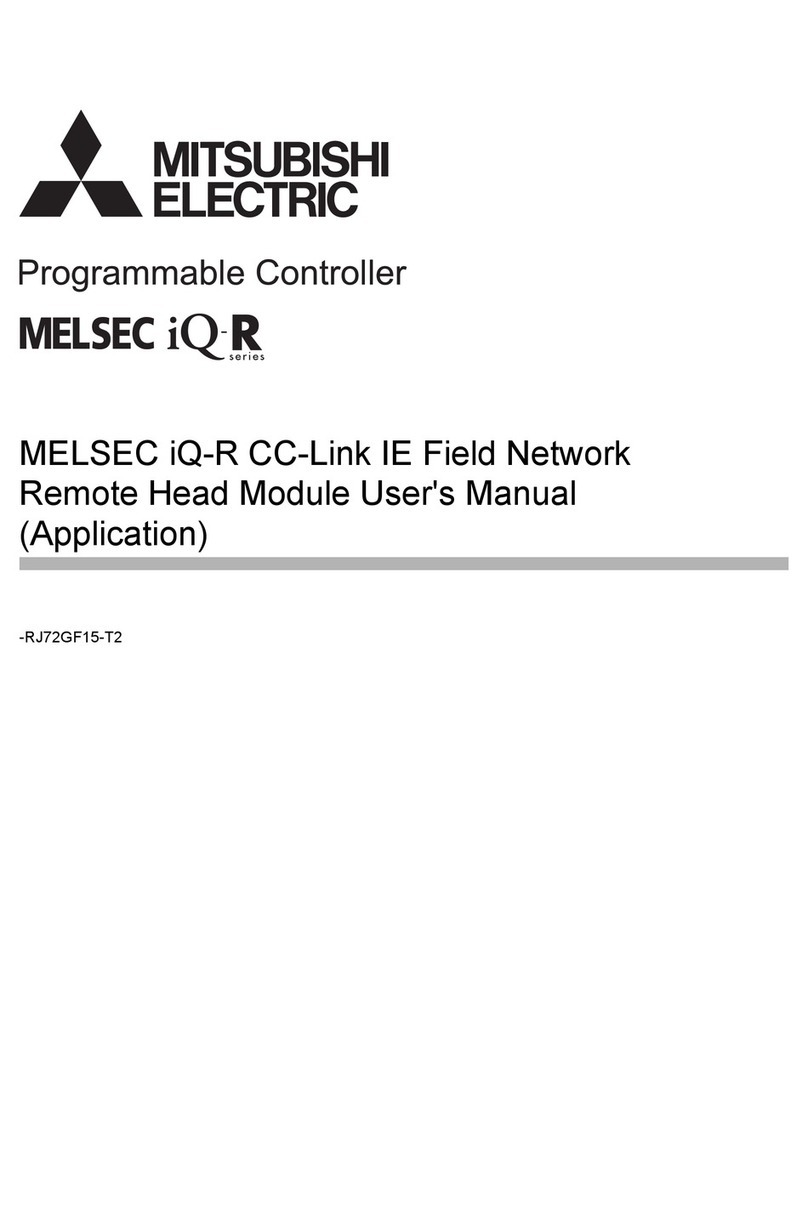
Mitsubishi Electric
Mitsubishi Electric MELSEC iQ-R Series user manual

Mitsubishi Electric
Mitsubishi Electric R64MTCPU user manual
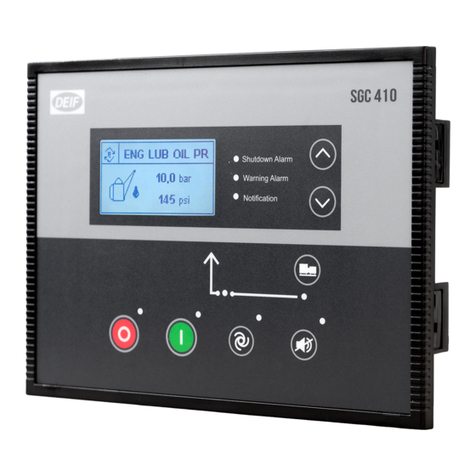
Deif
Deif SGC 410 user manual
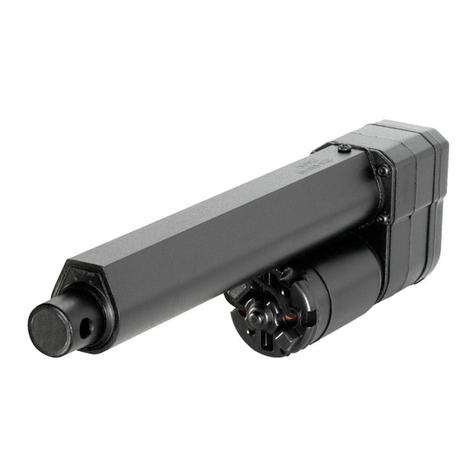
THOMSON
THOMSON Electrak 1 Series Operation manual
